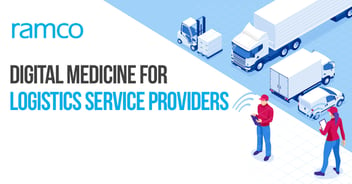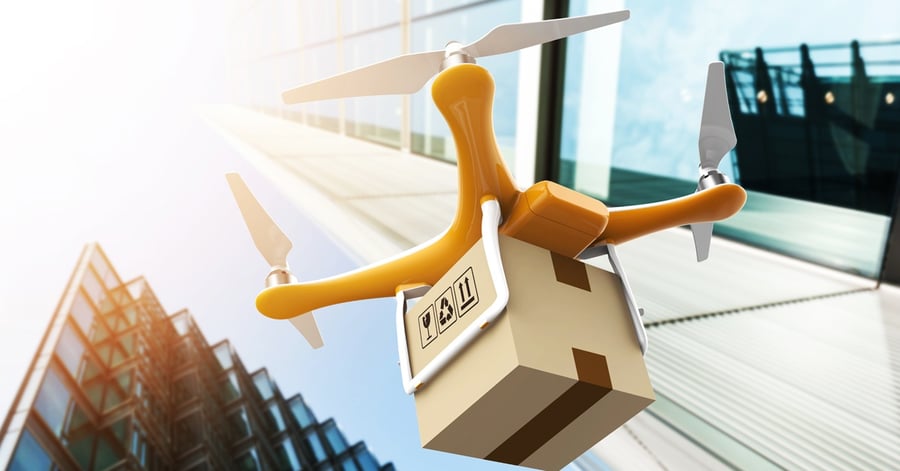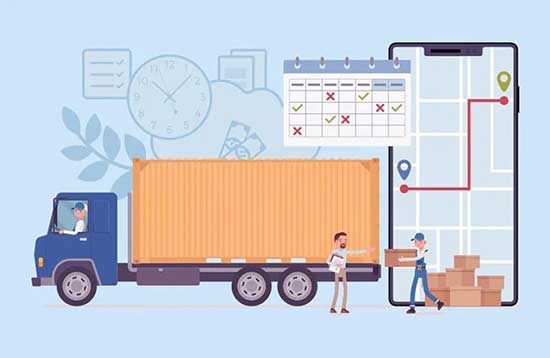

In the first blog post of this series, we took a quick peek at the brilliant technology- and data-driven innovations and business models that are disrupting today’s logistics landscape. In this blog post, we’ll highlight some of the most discussed and anticipated innovations in this industry. We will also evaluate the challenges that logistics service providers (LSPs) are facing despite such promising solutions simplifying the entire ecosystem.
What are these brilliant solutions and what are the Herculean challenges hindering at least some LSPs from adopting these solutions with ease?
Data-powered, intelligent technology has certainly transformed every aspect of logistics operations. From smart warehousing to overcoming the last mile challenges. The ease of becoming digitally fit has become a critical measure of success in today’s logistics landscape, and data has become the strongest enablers of this fitness mantra.
But despite the logistics ecosystem creating brilliant data-driven technologies, only the smart and early adopters of these innovations are turning out to be clear winners, while the slow adopters and the resisters are gradually drowning into extinction.
What are these innovations and what are the hurdles that delay their seamless implementation across all LSPs?
Innovations that are improving the digital capabilities of logistics
Innovations simplifying labour-intensive tasks
Meeting the extensive labour and resource requirements of this industry has always been a major hurdle in the logistics business. Until recently, there was always a trade-off between service levels and costs. But digitalization has successfully broken down this adjustment, allowing firms to offer better services and save money, without the need for additional labour. Interestingly, some of the industry’s most labour-intensive processes are being increasingly fully or partially automated. There are many examples, including automated loading and unloading systems in warehouse management, robotic automation that increases efficiency in sorting and distribution centres, and autonomous vehicles that drastically minimize the need for labour and increase delivery efficiency.
Hurdles in adoption:However, adopting these technologies is not a cakewalk for all LSPs, as is clear by the unequal adoption pattern of this technology. Certain technologies such as autonomous vehicles are slow in adoption given the strict regulatory environments in many countries and the ethical discussion around possible emergency situations arising from these innovations.
Innovations redefining the parameters of automation
Advances in data processing have matched the steps of technological innovations, with the landscape pushing all imaginable boundaries in automating even complex tasks. Companies such as Google are experimenting with self-driving lockers, and the trucking industry is working on partially automated truck convoys. The industry is also experimenting with overcoming its last-mile delivery challenges through concepts such as delivery drones.
Hurdles in adoption:Technologies such as delivery drones are still not a complete reality with LSPs because of concerns and questions regarding security, regulatory restrictions, and privacy.
Innovations driving logistics efficiency on top gear
Intelligent technologies such as augmented reality and artificial intelligence are serving as brilliant assistants to drivers, providing them real-time guidance on critical parameters such as the driving conditions, the optimal route, the vehicle performance, and the package parameters, in case of, say, temperature-sensitive goods.
Hurdles in adoption:With multiple solutions claiming superior performance in different areas, LSPs find it challenging to pick one best option that fits all their requirements.
Innovations delivering physical goods as seamless as digital information
The physical Internet is the latest revolutionary innovation that has captured the imagination of the logistics ecosystem. In theory, this innovation is a global system that transmits goods within specific-sized containers through any exchangeable mode of transit across local and global locations with as much ease as data transmits through the internet. This technology is expected to disrupt the entire supply chain transactions in terms of collaborative operations, transparency, and efficiency.
Hurdles in adoption:With concerns regarding security and privacy issues looming large, the added questions about the possibility of collaboration across the industry to share resources and the ability to standardize packaging options are indeed considerable challenges.
Data-based innovations that enhance the customer experience
LSPs are leveraging the empowering influence of data analytics in deriving useful insights for decision making. But an in-depth exploration of the extent to which data analytics can be leveraged by the logistics landscape has dug out some interesting applications. Examples of data-driven operational efficiencies and positive customer experiences include predictive maintenance of equipment, round-the-clock visibility of inventory status, and real-time status of shipments.
Hurdles in adoption:Here too, the extent of innovation is uneven across the landscape, with many LSPs expressing apprehensions about data security and the possible gaps between expectation and reality.
Innovations reinventing security across extensive supply chain networks
Technology disruptions like Blockchain arrived into logistics with a bang, delivering on its promises of ensuring secure transactions across the supply chain; permission-based data sharing; elimination of multiple versions of data; minimizing the scope for errors and fraudulence; streamlining multiparty interactions across the supply chain etc.
Hurdles in adoption:The pattern of adoption of blockchain technology too is uneven & in this nascent stage validation of the technology provider’s capabilities is quite a challenge.
The LSPs need of the hour – matching the changing pace of data-enabled technology
Keeping pace with the ever-disruptive technological innovations is indeed quite a challenge. With a million solutions, innovations, and disruptions clamouring for attention, LSPs should become smarter in staying ahead of completion and focus on making the right choice. This would mean asking the right questions, doing focused research, and taking the guidance of external experts. But most importantly, this adoption of innovative technology requires a completely pro-innovation state of mind.
With exciting potential in changing the face of the logistics landscape, data-enabled technologies are showing a lot of promise, but their adoption rate across the industry is quite dismal as compared to related industries. However, the IDC predictions for the supply chain for this decade look promising, with the report indicating that by the end of this decade, about a third of manufacturing supply chains will have analytics-empowered cognitive and intelligent capabilities, enhancing performance by about 5% and bringing in about a 10% increase in cost efficiency.
This will require a standard pace of mature adoption of technologies and a collaborative business model. In our next post, we will assess the options of deriving such new sharing models in the logistics business.


